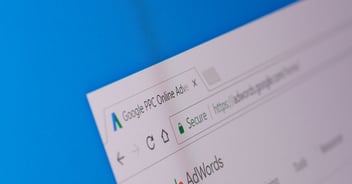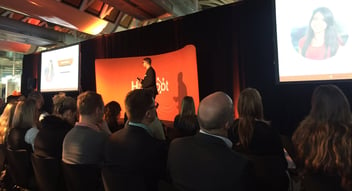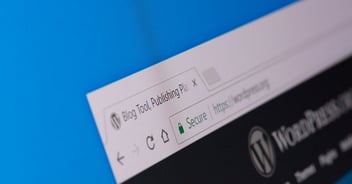CRO (Conversion Rate Optimisation) improves ROI (Return On Investment)
In 1923 Claude Hopkins wrote the book Scientific Advertising – essential reading for anyone in the advertising industry. Claude Hopkins used split testing and coupons to "test and measure" Conversion Rate Optimisation. Fast forward to today and he would have been amazed at how quickly and effectively we can optimise content and conversions.
Conversion Path
Before you start Conversion Rate Optimisation you've got to start with a Conversion Strategy. A typical conversion path starts at the source:
- Traffic Source – a link to your page e.g. Google
- Landing Page – content that people are looking for e.g. a Blog Post
- Call To Action – a compelling offer that makes the visitor want to download a Lead Magnet
- Landing Page – a sales page that is designed to convert the Visitor into a Lead.
- Form – a form to collect the visitors details so we can market to them
- Lead Magnet – an offer of high value content exchanged for an email address
- Thank You Page – a page to continue the Buyers Journey with more rewarding content
This is a typical Inbound Marketing approach. Our aim is to "out educate" our prospect rather than "out sell" our competition.
Why optimise
Small tweaks in the process add up to a big difference at the bottom line (see Summary below).
A simple example if we have a blog post that gets 1,000 visitors and 30 download a Lead Magnet then we have a 3% Conversion Rate. We now have 30 people we "nurture" with an email marketing sequence. If 3 of those people buy our product we've got a 10% Close Rate.
So, let's assume we can optimise each step by a conservative 10%.
Conversion Rate Optimisation
Now we've got our path, and all the technology working it's time to look at optimising the Conversion Path.
Traffic Sources
By optimising our "On page SEO (Search Engine Optimisiation)" we can increase the amount of traffic to the page. So, assuming we made a difference of 10% then we'd get another 100 visitors. These numbers aren't exact, and I'm choosing round numbers to make the math easier. In the real world we analyse your actual data.
Landing Page
Your content is what people are searching for in Search Engines. It's not like Social Media where people consume content in the way people used to "surf the web". So, if your content doesn't deliver what people were searching for then they will "bounce" back to the Search Results. By improving your bounce rate you improve the amount of time people spend on the page and the likelihood of taking further action.
Call To Action
If the visitor has been on the first page, long enough to engage, it's our job to entice them to take the next step – download a Lead Magnet. Notice we're not trying to sell them our product at this stage, we're educating the visitor so we become a trusted authority on the subject they are researching.
Landing Page
This Landing Page is more focused on getting the visitor to take action. Menus are removed there's only one way forward and one back. This Landing Page includes a form to download the Lead Magnet.
Form
Short Form (less fields) for low value content e.g. a checklist. Long Forms (more fields) for high value content e.g. a free trial. By optimising your form you can increase Form Submissions (Conversions).
Lead Magnet
Does the title of the Lead Magnet express the value of the content? Are the images compelling? Is the Lead Magnet approachable? Or do you have too much industry jargon?
Thank You Page
People rationalise a purchase more after purchase than before buying. "Did I make the right choice?", "What if I over-paid?", "What if the new model comes out and it's better?". The thank you page is a great opportunity to to enhance the experience, demonstrate you care and that you're going to care when they buy from you further down the track.
Let's look at the numbers
Everything online is measurable. We decide what we think is the best plan, at the time, then we test and measure to improve.
Using our early example, if we optimise by 10% on each interaction. 1,000 visitors becomes 1,100 visitors. Our bounce rate drops by 10% so more people stay on the page longer. Also, we increase clicks on our Call To Action (CTA) by 10%. By optimising our Landing Page and Form we gain another 10%. With these incremental tweaks we increased leads from 30 to 46. And, even without increasing the Close Rate, we increased sales 3 to 5 (with a bit of rounding) which is roughly 66% increase.
Summary
As you can see by making small improvements at each step in the path we can get great results. By optimising each step by only 10% we increased the number of sales by 66%. Now we've increased our Conversion Rate what happens if we doubled the traffic with Online Advertising? To answer my own question that's 92 new leads we can nurture with Email Marketing and 9 new customers (bearing in mind our cost of sales will have increased with advertising and setup).


